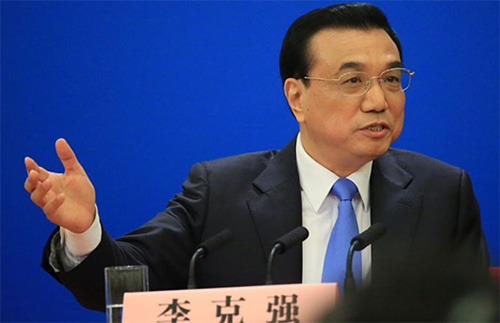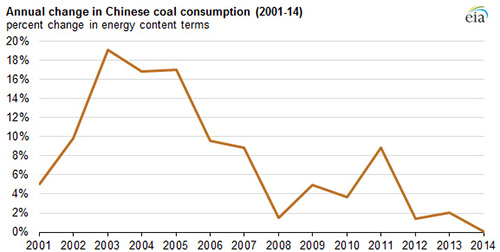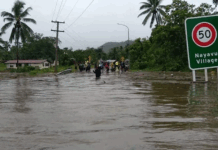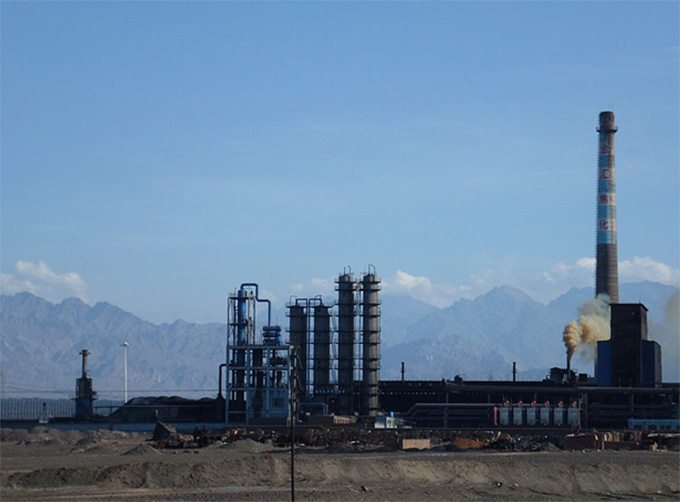With Beijing and Shanghai experiencing a decline in air pollution, is China finally starting to win the battle for its clean energy revolution? Jihee Junn files for Asia-Pacific Report.
Yu Hua, one of China’s most acclaimed writers, wrote in his 2012 book China in Ten Words: “We had no concept of expressways or advertisements; we had very few stores, and very little to buy in the stores we did have. We seemed to have nothing then, but we did have a blue sky.”
Twenty-first century China, however, is a different story. The once insulated and agrarian-based nation has been transformed into a petrie dish of modern technological and economic advancement. Manufacturing has boomed and exports have skyrocketed, but so have their unsightly results.
Smog-filled skies now blanket the country’s metropolitan centres, along with polluted waterways and excess waste. Last year, Beijing issued its first ever “red alert” on the city’s air quality, closing schools and factories, and forcing thousands of private vehicles off the road.
Dire as China’s environmental situation may seem, recent studies have noted some improvements. The World Health Organisation’s latest data shows that air pollution is no doubt rising in the world’s poorest cities, and that Chinese cities are still some of the most polluted. But at the same time, air quality throughout much of the country has also improved.

Similarly, Greenpeace East Asia’s air quality rankings found worsening conditions for almost 70 cities in central and Western China. But in major cities in the East such as Beijing and Shanghai, the average concentration of pollution in both cities fell by double digits.
In a media release, Greenpeace East Asia’s climate and energy campaigner Dong Liansai says that the implementation of anti-pollution measures five years ago has had a drastic effect in cutting down on toxic emissions
“The findings show that the government’s measures to curb air pollution in eastern China’s key regions work,” says Dong.
“But now is not the time to selectively implement these policies. They must be introduced across the country to ensure clean air for all.”
Declaring change
For the government, curbing pollution has been a serious matter for some years now, and it now seems to make a routine of declaring war on the country’s atmosphere.

Speaking at the opening session of the country’s parliament last year, China’s Premier Li Keqiang announced that an “unrelenting” effort was needed to clear the country’s smoggy skies and toxic rivers. A year before that, Li promised to “declare war” on pollution.
Dr Jason Young at the New Zealand Contemporary China Research Centre, says that the government realises the model that brought modernisation to China can no longer be sustained.
“There is a realisation that energy security cannot follow the traditional uses. They have come to the realisation that China’s urbanisation and industrialisation has come about at a period of world history where it’s just no longer an option to industrialise in the same way.”
Environmentalist Ma Jun says he has been encouraged by the government’s commitment to punish not just the companies causing pollution, but also local officials who have often ignored environmental crimes.
Despite having environmental protection laws, Jun says “the cost of violation remains low and serial polluters just pay fines year after year without solving their problem”.
Dr Young says that part of the problem stems from the fact that many polluters are often local and beyond central government control.
‘Abject failure’
“A lot of efforts have been made at the central government level on new environmental standards. But you have this disjuncture between the interests of central government, the interests of local government, and the interests of local businesses and state enterprises.”
“I’d say they’re making more of an improvement lately…but at the moment it’s still quite an abject failure.”
Following Li Keqiang’s speech, the Finance Ministry announced that it would spend more than 11 billion yuan (more than NZ$2 billion) in combatting air pollution. A further 47 billion yuan (NZ$10 billion) has been ear-marked to subsidise work such as energy conservation and emission reduction.
With both figures outpacing China’s GDP growth target, it highlights a key balancing act for the government.
“On one hand you want to keep a certain level of economic growth, while on the other hand, you want to restructure and rebalance, and environmental issues are part of that,” says Professor Xiaoming Huang, a specialist in East Asian political economy at Victoria University
Premier Li also announced that the money would be partially spent upgrading coal-fired power stations to help them achieve “ultra-low emissions,” as well as introducing “zero-growth in the consumption of coal in key areas of the country”.
But with traditional forms of energy still embedded into the livelihoods of thousands of Chinese, many workers will be forced to pay the steep price of the ‘clean energy revolution’.
‘Unfair distribution’
“There’s a groundswell of opinion that the environment is a really significant issue, but the implications of doing that often have very unfair distributions on people’s livelihoods. So people who work in the fuel sector or coal sector are the ones that get made redundant,” says Dr Young.
“They want to ensure their kids don’t get lead poisoning from water or that their school isn’t next to a polluting factory. But on the other hand, there’s a general belief that China needs to push on through development so that it can become an advanced.”
“China is still a middle income country. It’s not an advanced economy, so you have this strong push, almost like a social desire for the country to develop.”
In China, coal accounts for almost two-thirds of all energy produced, but is also one of the biggest pollutants into China’s atmosphere.
In an effort to curb its coal dependency, it was announced that not only would the world’s largest energy consumer continue to trim production capacity, but that it would halt the building of all new coal mines for the next three years—the first time the government has ever done so.
With coal consumption currently around 64.4 per cent, the National Energy Administration is aiming to cut this number down to 62.6 per cent by the end of 2016, as well as closing down more than a 1000 existing coal mines.
To compensate, China plans to increase its wind and solar power capacity by more than 20 per cent, continuing its path onto a renewable energy-based future.
Renewable technology
Professor Huang says China is becoming one of the international leaders on renewable technology.
“The predominant form of energy in China is burning fossil fuels. So the government is spending quite a lot of money in solar, wind, and water-based energy and it works with quite a lot of American and German companies.”
“Internationally, in terms of technology, China is doing very well. Over time they want to reduce fossil-based energy forms, although I don’t think they’re there yet.”

Yuan Ying, an energy campaigner for Greenpeace East Asia, says the reality of China’s efforts to become a high-tech, innovative economy is much more complicated.
“China’s grid is in urgent need of an upgrade if it is to fully utilise the potential of wind and solar power…Coal is doing its utmost to dig itself in, despite the headwinds of falling coal consumption, declining heavy industry, government policies limiting coal and promoting renewables.”
Social consciousness
Since the making of former United States Vice-President Al Gore’s Oscar-winning documentary, An Inconvenient Truth, the film has been credited with raising international awareness on global warming and reenergising the environmental movement.
Almost a decade on from its release in 2006, Chinese audiences were treated with their own cinematic examination when Under the Dome was released online last year. The feature length documentary went viral, attracting more than 200 million viewers before internet censors removed the film for sparking intense criticism of the government online.
Created by celebrity journalist Chai Jing, Under the Dome looks at the human faces behind China’s perennial smog problem, with some observers calling the film “a tipping a point”.
As viewers faced up to the facts of their ‘inconvenient truth’, the government vowed to tackle the “unprecedented” environmental issue of mass pollution.
Ying says there has been a massive upsurge in public awareness around the safety hazards of pollution and waste.
“For many people, it is now a daily routine to check air pollution apps and make the decision whether or not to wear a protective mask.”
“Awareness in other areas is starting to grow too. Many safety concerns over food, for example, have given rise to an awareness of environmental standards in the agricultural industry.”
Rest of Asia still faltering
Despite China’s steady improvements, the rest of Asia—containing some of the most populous developing countries—are still falling behind on the air quality radar.
In the same WHO report which found China’s air pollution rates to be falling, it says the most polluted cities are in India, while Hanoi is the most polluted city in Southeast Asia.
With one of the worst air quality levels in the entire continent, Vietnam’s environmental monitoring agency says that road traffic is to blame for 70 per cent of Hanoi’s stifling air pollution.
As was the case in China, rapid economic growth in the post-Cold War period has seen the use of cars and motorbikes skyrocket in Vietnam, a significant departure from days when cycling was the primary form of transport.
Even in advanced economies such as Japan, activists warn that it is at serious risk of damaging its air quality. As the country continues to suffer from the radioactive fallout from the 2011 Fukushima disaster, Japan plans to build dozens of new coal-fired power plants over the next 12 years instead.
Low carbon plan
In March, China announced its 13th Five-Year plan that will lead one of the largest economies into the next phase of development. The plan, which was announced at the National People’s Congress, announced that it would promote a cleaner, greener industry.
According to Chinese state media, the plan will focus on the “energy revolution” which will establish a modern system that is clean, low-carbon, and efficient”.
Dr Young remains realistic, and says that China will suffer “a lot of environmental degradation, a lot of pollution, and a lot of pain in the medium term”.
“But in the long term, I’m quite positive that’s how China will pull through.”
Jihee Junn compiled this report as part of the Pacific Media Centre’s Asia Pacific Journalism Studies course.










































